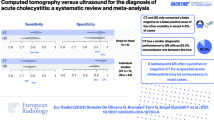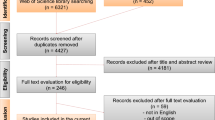Abstract
Purpose
Shockwave lithotripsy (SWL) is a minimally invasive technique utilized for renal and ureteric stones in children. Despite being considered safe, certain complications have been recorded. We performed this systematic review and meta-analysis to provide a pooled analysis of Clavien–Dindo graded complications after SWL in children.
Methods
MEDLINE/PubMed, Scopus and Cochrane Central Register of Controlled Trials and Cochrane Database of Systematic Reviews, were screened from inception to 12/02/2022 by two authors independently. Only randomized controlled trials providing Clavien–Dindo classification or relevant clinical information were considered eligible. Overall complications were calculated using the aggregate number of each complication divided by the total number of patients in studies with data.
Results
Pooled analysis revealed that from children treated with SWL, 27.7% [95% CI 13.1–49.4] suffered Clavien I complications, 4.9% [95% CI 3.1–7.6] Clavien II complications, 2.7% [95% CI 1.6–4.7] Clavien III complications, 2.3% [95% CI 1.3–4] Clavien IV complications, while no Clavien V complications were recorded. In total, 28.1% [95% CI 15.6–45.3] of children suffered minor complications (Clavien–Dindo I–II), while 3% [95% CI 1.8–5] major complications (Clavien–Dindo III–V). Pooled analysis revealed that 10.7% [95% CI 3.2–30.1] of patients suffered macroscopic hematuria, 7.3% [95% CI 2.1–22.7] pain, 5.5% [95% CI 3.3–9] steinstrasse, 5.3% [95% CI 3–9.3] fever, 2.2% [95% CI 0.8–5.6] sepsis, 1.1% [95% CI 0.3–3.7] urinoma, 1% [95% CI 0.4–2.7] symptomatic hematoma and 1% [95% CI 0.3–2.7] asymptomatic hematoma. Need for re-treatment was 42.6% [95% CI 31.4–54.7] and need for auxiliary procedures was 11.8% [95% CI 8.5–16.1].
Conclusion
SWL is an irreplaceable tool for treating urolithiasis in children. Although a minimally invasive technique, parents and children should be adequately informed about the risk of minor/major complications.


Similar content being viewed by others
Data availability statement
All data generated or analysed during this study are included in this published article (and its supplementary information files).
References
Alfandary H, Haskin O, Davidovits M, Pleniceanu O, Leiba A, Dagan A (2018) Increasing prevalence of nephrolithiasis in association with increased body mass index in children: a population based study. J Urol 199(4):1044–1049
Tekgül S (2015) Percutaneous nephrolithotomy vs retrograde intrarenal surgery for upper tract calculi in children-which is a better option for which stone condition? J Urol 194(6):1529–1530
Bogris S, Papatsoris AG (2010) Status quo of percutaneous nephrolithotomy in children. Urol Res 38(1):1–5
Radmayr CBG, Burgu B et al (2022) European Association of Urology (EAU) pediatric urology guidelines. EAU Guidelines Office, Arnhem
Dogan HS, Altan M, Citamak B, Bozaci AC, Karabulut E, Tekgul S (2015) A new nomogram for prediction of outcome of pediatric shock-wave lithotripsy. J Pediatr Urol 11(2):84.e1–6
Onal B, Tansu N, Demirkesen O, Yalcin V, Huang L, Nguyen HT et al (2013) Nomogram and scoring system for predicting stone-free status after extracorporeal shock wave lithotripsy in children with urolithiasis. BJU Int 111(2):344–352
Ceyhan E, Ozer C, Ozturk B, Tekin MI, Aygun YC (2021) Ability of ESWL nomograms to predict stone-free rate in children. J Pediatr Urol 17(4):474.e1-474.e6
Skolarikos A, Alivizatos G, de la Rosette J (2006) Extracorporeal shock wave lithotripsy 25 years later: complications and their prevention. Eur Urol 50(5):981–990 (discussion 90)
Dindo D, Demartines N, Clavien PA (2004) Classification of surgical complications: a new proposal with evaluation in a cohort of 6336 patients and results of a survey. Ann Surg 240(2):205–213
Moher D, Liberati A, Tetzlaff J, Altman DG (2009) Preferred reporting items for systematic reviews and meta-analyses: the PRISMA statement. BMJ 339:b2535
Mittal V, Srivastava A, Kappor R, Ansari MS, Patidar N, Arora S et al (2016) Standardized grading of shock wave lithotripsy complications with modified Clavien system. Urol Int 97(3):273–278
Wells GA SB OCD, Peterson J et al (2016) The Newcastle–Ottawa Scale (NOS) for assessing the quality of nonrandomized studies in meta-analyses
Hozo SP, Djulbegovic B, Hozo I (2005) Estimating the mean and variance from the median, range, and the size of a sample. BMC Med Res Methodol 5(1):13
Wan X, Wang W, Liu J, Tong T (2014) Estimating the sample mean and standard deviation from the sample size, median, range and/or interquartile range. BMC Med Res Methodol 14(1):135
Alsagheer GA, Mohamed O, Abdel-Kader MS, Hasan AM, Abdel Razek M, Fathi A et al (2018) Extracorporeal shock wave lithotripsy (ESWL) versus flexible ureteroscopy (F-URS) for management of renal stone burden less than 2 cm in children: a randomized comparative study. Afr J Urol 24(2):120–125
Mokhless IA, Abdeldaeim HM, Saad A, Zahran AR (2014) Retrograde intrarenal surgery monotherapy versus shock wave lithotripsy for stones 10 to 20 mm in preschool children: a prospective, randomized study. J Urol 191(5 Suppl):1496–1499
Farouk A, Tawfick A, Shoeb M, Mahmoud MA, Mostafa DE, Hasan M et al (2018) Is mini-percutaneous nephrolithotomy a safe alternative to extracorporeal shockwave lithotripsy in pediatric age group in borderline stones? a randomized prospective study. World J Urol 36(7):1139–1147
Elderwy AA, Kurkar A, Hussein A, Abozeid H, Hammodda HM, Ibraheim AF (2014) Dissolution therapy versus shock wave lithotripsy for radiolucent renal stones in children: a prospective study. J Urol 191(5 Suppl):1491–1495
Kaygisiz O, Cicek MC, Mert A, Akesen S, Sarandol E, Kilicarslan H (2021) Which frequency is better for pediatric shock wave lithotripsy? Intermediate or low: a prospective randomized study. World J Urol 39(10):3963–3969
Salem HK, Fathy H, Elfayoumy H, Aly H, Ghonium A, Mohsen MA et al (2014) Slow vs rapid delivery rate shock wave lithotripsy for pediatric renal urolithiasis: a prospective randomized study. J Urol 191(5):1370–1374
Shahat A, Elderwy A, Safwat AS, Abdelkawi IF, Reda A, Abdelsalam Y et al (2016) Is tamsulosin effective after shock wave lithotripsy for pediatric renal stones? A randomized, controlled study. J Urol 195(4 Pt 2):1284–1288
Kumar A, Kumar N, Vasudeva P, Kumar R, Jha SK, Singh H (2015) A single center experience comparing miniperc and shockwave lithotripsy for treatment of radiopaque 1–2 cm lower caliceal renal calculi in children: a prospective randomized study. J Endourol 29(7):805–809
Basiri A, Zare S, Tabibi A, Sharifiaghdas F, Aminsharifi A, Mousavi-Bahar SH et al (2010) A multicenter, randomized, controlled trial of transureteral and shock wave lithotripsy–which is the best minimally invasive modality to treat distal ureteral calculi in children? J Urol 184(3):1106–1109
Tuncer M, Kafkaslı A, Can U, Çoşkun A, Eryıldırım B, Sarica K (2021) What is the optimal frequency in shock wave lithotripsy for pediatric renal stones? A prospective randomized study. Urolithiasis 49(4):377–383
Omran M, Sakr A, Desoky EAE, Ali MM, Abdalla MMH (2020) Miniature semi-rigid ureteroscopy with holmium-yttrium-aluminium-garnet laser vs shockwave lithotripsy in the management of upper urinary tract stones >1 cm in children. Arab J Urol 18(2):106–111
Page MJ, McKenzie JE, Bossuyt PM, Boutron I, Hoffmann TC, Mulrow CD et al (2021) The PRISMA 2020 statement: an updated guideline for reporting systematic reviews. BMJ 372:71. https://doi.org/10.1136/bmj.n71
Raza A, Turna B, Smith G, Moussa S, Tolley DA (2005) Pediatric urolithiasis: 15 years of local experience with minimally invasive endourological management of pediatric calculi. J Urol 174(2):682–685
Tzelves L, Geraghty R, Mourmouris P, Chatzikrachtis N, Karavitakis M, Somani B et al (2021) shockwave lithotripsy complications according to modified Clavien-Dindo grading system. A systematic review and meta-regression analysis in a sample of 115 randomized controlled trials. Eur Urol Focus
Smith A PG, Kavoussi L, Badlani G (2019). Smith’s textbook of endourology, 4th edition, pp 691–712
Willis LR, Evan AP, Connors BA, Blomgren P, Fineberg NS, Lingeman JE (1999) Relationship between kidney size, renal injury, and renal impairment induced by shock wave lithotripsy. J Am Soc Nephrol 10(8):1753–1762
Muslumanoglu AY, Tefekli A, Sarilar O, Binbay M, Altunrende F, Ozkuvanci U (2003) Extracorporeal shock wave lithotripsy as first line treatment alternative for urinary tract stones in children: a large scale retrospective analysis. J Urol 170(6 Pt 1):2405–2408
VanderBrink BA, Gitlin J, Toro S, Palmer LS (2009) Effect of tamsulosin on systemic blood pressure and nonneurogenic dysfunctional voiding in children. J Urol 181(2):817–822
Funding
This research received no external funding. Institutional Review Board Statement: The study was conducted according to the guidelines of the Declaration of Helsinki and approved by the Institutional Review Board of Sismanogleio General Hospital (Ref.No 15179/2020). The authors Bhaskar Somani and Andreas Skolarikos are members of the editorial board of the World Journal of Urology.
Author information
Authors and Affiliations
Contributions
NC: protocol development, data collection; LT: protocol development, data collection, data analysis; RG: data collection, data analysis; IM: data collection, manuscript writing; PJ-J: data collection, manuscript writing; AP: data collection, manuscript writing; MK: data collection, manuscript writing; MB: data collection, manuscript writing; TM: data collection, manuscript writing; BS: protocol development, data collection, manuscript editing; AS: protocol development, data collection, manuscript editing. All authors have read and agreed to the published version of the manuscript.
Corresponding author
Additional information
Publisher's Note
Springer Nature remains neutral with regard to jurisdictional claims in published maps and institutional affiliations.
Supplementary Information
Below is the link to the electronic supplementary material.
Rights and permissions
Springer Nature or its licensor (e.g. a society or other partner) holds exclusive rights to this article under a publishing agreement with the author(s) or other rightsholder(s); author self-archiving of the accepted manuscript version of this article is solely governed by the terms of such publishing agreement and applicable law.
About this article
Cite this article
Chatzikrachtis, N., Tzelves, L., Geraghty, R. et al. Complication rate after pediatric shock wave lithotripsy according to Clavien–Dindo grading system: results from a systematic review and meta-analysis of the existing literature. World J Urol 41, 829–835 (2023). https://doi.org/10.1007/s00345-022-04267-x
Received:
Accepted:
Published:
Issue Date:
DOI: https://doi.org/10.1007/s00345-022-04267-x




